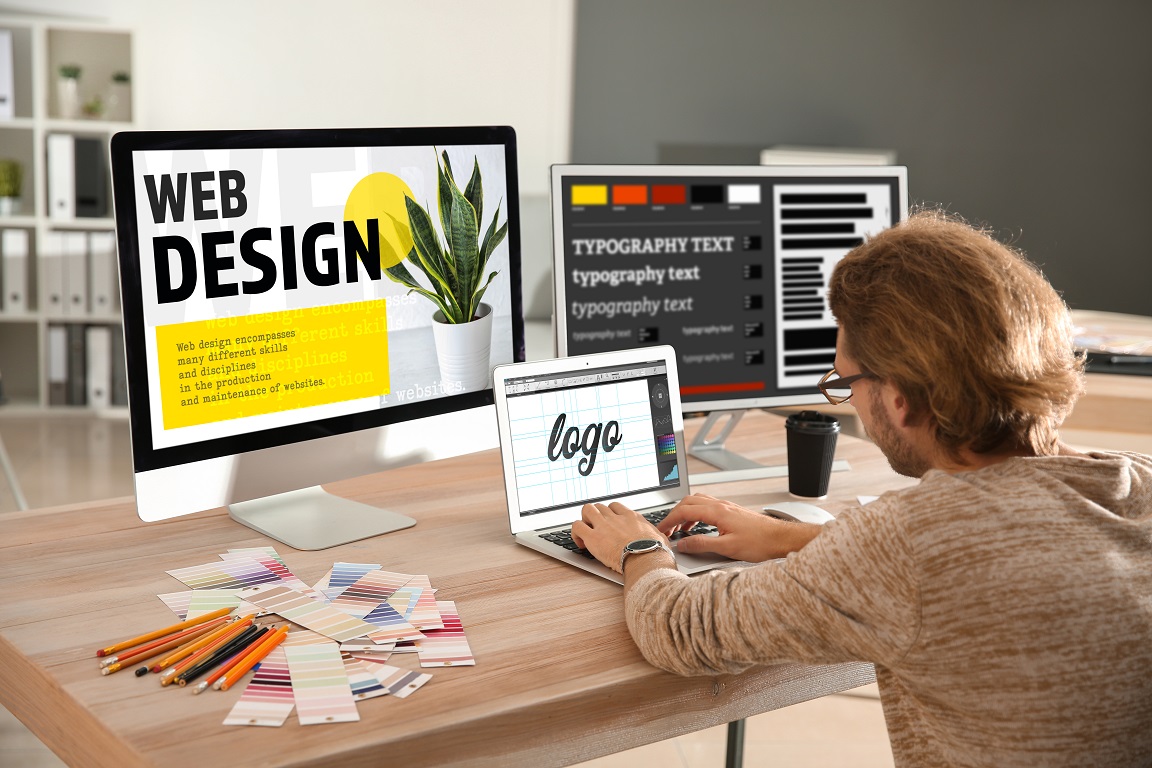Aligned Position Web Design: Building Responsive, Mobile-Friendly Websites for Modern Users
Aligned Position Web Design: Building Responsive, Mobile-Friendly Websites for Modern Users
Blog Article
The Very Best Sorts Of Web Layout to Boost Individual Experience and Interaction
In the ever-evolving landscape of digital communication, the effectiveness of Web design considerably affects user experience and involvement. Numerous style techniques, such as minimal, receptive, and interactive layouts, each offer special advantages that can satisfy diverse user demands. Recognizing which kinds of website design ideal serve these goals can be pivotal for companies intending to enhance consumer fulfillment and retention. However, the concern stays: which design elements truly reverberate with customers and foster significant engagement? The expedition of these principles exposes vital understandings that may redefine your method to website design.
Minimal Website Design
As digital landscapes become progressively messy, minimal Web style has actually become an effective technique to enhancing customer experience. This style philosophy prioritizes simpleness, focusing on essential elements while getting rid of unnecessary interruptions. By making use of enough white space, uncomplicated navigating, and a restricted color palette, minimalist layout cultivates clarity and guides customer interest to essential content.
The core principle of minimal website design is to develop a seamless communication for individuals. By minimizing cognitive lots, users can swiftly understand information without feeling bewildered. This straight technique not only improves use but likewise encourages involvement, as visitors are a lot more most likely to explore a site that is visually attractive and very easy to browse.
Furthermore, minimalist layout often emphasizes typography and images, utilizing these components strategically to convey messages effectively. In significance, minimalist Web design is not just a trend; it is a thoughtful approach that acknowledges the relevance of user-centered layout.
Responsive Web Design
In today's varied digital atmosphere, responsive Web style has become vital for developing a smooth customer experience across a wide range of tools. As individuals gain access to websites on mobile phones, laptop computers, tablets, and desktop computers, the capability of a website to adapt its layout and web content to different screen sizes and resolutions is critical.
Responsive website design utilizes versatile grids, photos, and CSS media inquiries to ensure that Web material is offered optimally, no matter the gadget utilized. This approach not only enhances the aesthetic appeal of an internet site yet additionally significantly improves functionality. Individuals are more most likely to engage with a website that uses a regular experience, as it removes the aggravation of needing to focus or scroll exceedingly.
Moreover, internet search engine, including Google, focus on mobile-friendly web sites in search positions. By taking on responsive style, organizations can enhance their exposure and get to a broader audience. This technique additionally streamlines internet site maintenance, as a single variation of the website can deal with all gadgets, minimizing the requirement for multiple variations. In recap, receptive Web design is an essential practice that enhances individual experience, interaction, and total contentment.
Interactive Website Design
Responsive Web design lays the groundwork for enhancing user experience, yet interactive website design takes this an action even more by engaging users in an extra vibrant method - Aligned Position Web Design. By integrating elements such as computer animations, clickable prototypes, and real-time responses, interactive website design captivates customers, attracting them right into a richer surfing experience
This technique not just fosters interaction but additionally urges users to check out content proactively instead of passively eating it. Techniques such as gamification, where users earn rewards for completing tasks, can significantly enhance the time invested in a website and improve total complete satisfaction. Furthermore, interactive functions can simplify complicated info, making it a lot more absorbable and delightful.

Integrating interactive style aspects can also bring about greater conversion rates, as users are much more likely to engage with a site that proactively includes them. Aligned Position Web Design. Eventually, interactive Web style transforms customer experiences into remarkable trips, ensuring that visitors return time after time
Flat Style
Characterized by its minimalistic technique, level design learn this here now highlights simplicity and performance, stripping away unneeded elements and focusing on vital attributes. This style philosophy prioritizes functionality, ensuring that individuals can navigate interfaces easily and efficiency. By using a tidy aesthetic, flat layout gets rid of the mess frequently located in much more elaborate designs, therefore boosting individual focus on material and functionality.
The trademark of level style hinges on its usage of strong colors, basic typography, and geometric forms. These components add to an aesthetically enticing interface that is both approachable and modern-day. Furthermore, level layout cultivates a feeling of quality, allowing users to discern crucial activities and info without diversion.
Moreover, level design is specifically efficient in responsive website design, as its simpleness converts well across different devices and display dimensions. The lack of detailed structures and gradients lessens packing times, which is crucial for maintaining customer engagement. As electronic landscapes continue to evolve, level layout continues to be an appropriate choice for developing easy to use websites that enhance total experience. By concentrating on essential features, level layout not only satisfies user requirements but additionally motivates smooth interaction, making it a crucial component of effective Web style strategies.
Flexible Web Design
Adaptive Web design personalizes the individual experience by creating multiple repaired formats customized to various display sizes and gadgets. Unlike receptive style, which fluidly readjusts a solitary format, flexible design employs distinctive formats for specific breakpoints, guaranteeing optimum presentation on different systems. This approach allows developers to focus on the distinct attributes of each gadget, boosting use by providing exactly what individuals require based upon their context.
Among the key benefits of flexible website design is its capability to enhance load times and efficiency. By serving tailored content and images that fit the user's gadget, internet sites can minimize information usage and improve loading rates. This is particularly useful for customers with slower connections or minimal data plans.

Furthermore, flexible layout promotes a more constant and regulated branding experience. Considering that designers create several formats, they can guarantee that the aesthetic elements straighten with the brand's identification throughout different platforms - Aligned Position Web Design. This causes a natural user experience, improving involvement and advertising customer retention
Verdict
Minimal layout fosters clarity and focus, while receptive design makes sure versatility throughout published here numerous devices, promoting access. Jointly, these layout approaches add to the creation of user-friendly environments that not just enhance fulfillment however likewise drive greater conversion rates, highlighting their crucial value in contemporary Web layout approaches.

Minimalist style fosters quality and focus, while responsive design guarantees versatility throughout numerous gadgets, advertising accessibility. Collectively, these design approaches add to the creation of user-friendly atmospheres that not just boost complete satisfaction but also drive greater conversion prices, emphasizing their essential relevance in modern Web design strategies.
Report this page